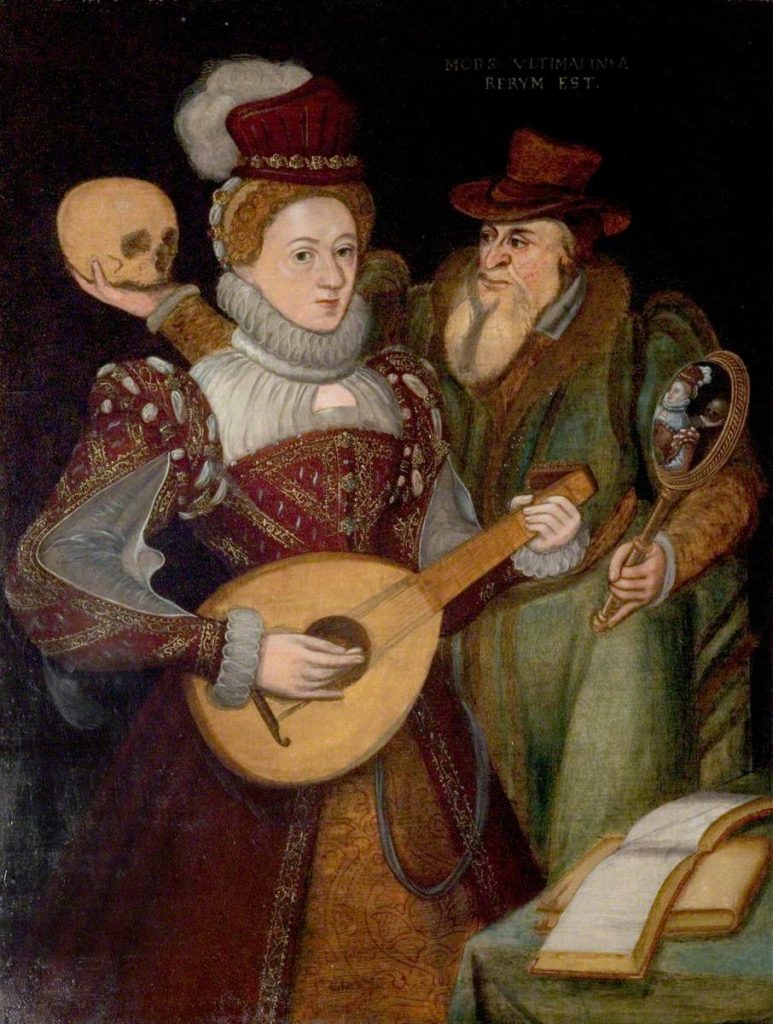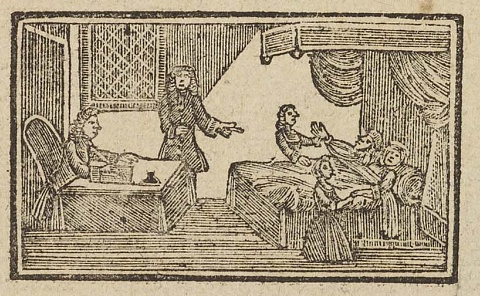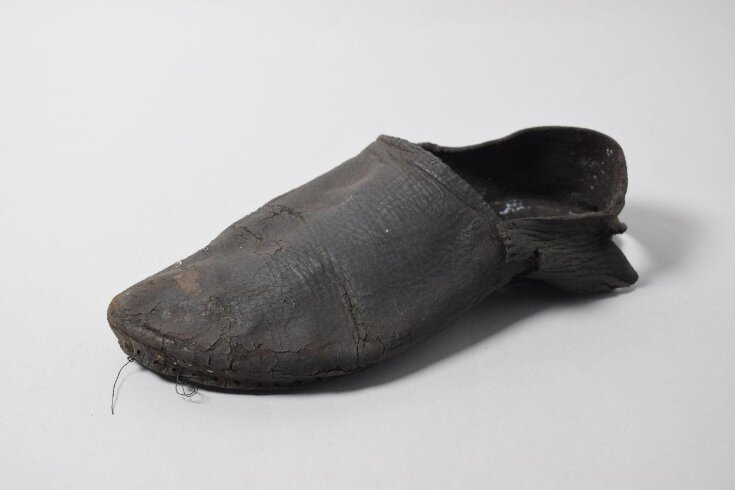Posted by e.m.vine@exeter.ac.uk
11 June 2024Emily Vine
Early modern folk frequently added ‘conditions’ to their wills: that a sum of money would not be given until a beneficiary reached the age of twenty-one, got married, or entered a certain profession, or threats to disinherit those who behaved poorly or ignored parental instruction. These caveats and contingencies reflect a key reason for making a will, one that testators often invoked in their preface – they stated they were planning for ‘the uncertainty of this transitory life’ and ‘for avoiding Controversies after my decease’. This post shows that contingent clauses were a vital tool for setting affairs in order, and they also serve as a reminder to us that wills are only ever a glimpse of a testator’s intentions and not a record of what actually happened after they died.

‘This transitory life’
Caveats and contingencies were often closely linked to the very uncertainty of the timing, location, and circumstances of death. This is particularly apparent in the wills of mariners, frequently made before the testator embarked on a lengthy and potentially dangerous voyage. The 1781 will of Closs Christianson, mariner of St Paul Shadwell, directly acknowledged ‘the perils and dangers of the seas’. Christianson’s intentions for the disposal of his body responded to these dangers: ‘I commend my soul to God that gave it and my body I commit to the earthe or sea as it shall please God to order’.[1]
The 1665 will of Robert Barnard desired: ‘if I dye in the Country I desire to be buried in the Chancell of Abington Church neare northampton amongst my Ancestors’ but ‘If I dye at London or neare it to be buried att Abingdon or the Temple my elder sonn and I have discourst it’.[2] The reference to Barnard’s discussion with his son reminds us that not all of a person’s intentions were recorded within the will itself, and that there were other more informal means and methods of setting affairs in order. In other wills, the place and circumstances of death could also introduce caveats related to bequests themselves. The will of Lawrence Platt, a Catholic priest who died in 1661, noted ‘Mrs Mary Nicholls if I die in her mother’s house, £5, but if I die in another place give her only a ring.’[3] This bequest sought to recognise and recompense the burden of accommodating or caring for a sick person, and also perhaps the added difficulties of harbouring a Catholic priest.

Influence from beyond the grave
Other common caveats and contingencies were related to attempts to influence beneficiaries’ actions or lives in some way. Elizabeth DeBold has shown that even small bequests could come with caveats or conditions: the gifting of a mourning ring, for example, came with the implicit assumption that the beneficiary would fulfil their obligation to remember the deceased.[4] Some conditional bequests were quite straightforward and self-contained. In 1604 Ralph Wrighte of Lincolnshire desired that each of his godchildren would receive a lamb, but only when they were old and able enough to perfectly recite the catechism.[5] [Read more about Ralph Wrighte’s will here].
Other significant bequests could come with larger or more specific stipulations which sought to shape the recipient’s behaviour. When John Scolowe of Worcester made his will in 1548 he made a number of bequests, dispersing sums of money alongside several cows, a brass pot, and pair of sheets. Scolowe left forty shillings to his two daughters, but with the following caveat:
if my daughters will not be ruled and quietly ordered By my Executours Overseers and other my good friends Then I will the forty shillings given my two daughters to be distributed for the wealth of my soul or the discretion of my executor friends and Overseers.[6]
Or more plainly: if his two daughters did not behave as expected or as instructed by the executors of Scolowe’s will, then their inheritance would be rescinded and dispersed elsewhere. Scolowe trusted the main executor of his will (ostensibly a relative – one Sir Richarde Scholowe) to determine whether or not his daughters had met the established conditions.
Indeed it was a common theme for testators to reaffirm the authority of the appointed executor or executrix, and to seek to manage potentially fraught relationships between surviving relatives, or to pre-empt challenges to the will. In 1540 Rauff Cullyn had left twenty shillings to his daughter Elizabeth and her husband, but warned that if they ‘trouble or vexe myne Executrice under namyd than I will that this my Legacie of xxs to my said doughter Elizabeth before given utterly to be voide’.[7] This clause acts to reiterate Cullyn’s trust in his executrix (his widow Margarett), and to ensure that any antagonism on Elizabeth’s part would result in her being written out of the will.
Life goes on?
While many testators sought to shape the behaviour and relationships of their beneficiaries or surviving relatives, others showed an awareness of matters beyond their control: of life moving on, and the prospect of their family members dying or even pre-deceasing them. Many men acknowledged the likelihood of their widows remarrying. Accordingly the nuncupative will of John Leicester, witnessed in September 1608, noted: ‘Item his will was that yf Anne his wife married that then shee shoulde have noe parte of his goodes but the same shoulde be equallie devided betwene his children’.[8] It was a relatively common caveat that if widows remarried they should forfeit goods received to the children of the deceased. Such clauses acknowledged the claim that any new husband could have on a widow’s property.
Many wills included caveats for what should happen if one beneficiary should predecease another. In 1606, the will of Richarde Streatefeilde of Kent specified:
if Clemence my wife happen to dye before my sonne Thomas, that then shee shall geve him Sixe payre of my best shoose, my best bed and all that belongeth unto yt, and twoo dozen of my beste pewter, and fower peeces of my beste brasse, & greate spytte, And my beste drippinge pan.[9]

While it was common to include conditions that anticipated the deaths of loved ones, other, more hopeful, caveats can be found. The London widow Margarett Beard made her will on 23 November 1664, but added in an important codicil just one week later:
And whereas att the tyme of the making of my said last Will I did presume and verily beleive that my sonne Thomas Beard was dead in some parts beyond the seas and since having beene credibly informed that my said sonne Thomas Beard is yett living beyond the Seas, And if itt shall please God that my said sonne Thomas shall live and returne home into England Then I doe hereby give and bequeath unto my said Sonne Thomas Beard ffive pounds.[10]
This hastily arranged codicil marks a departure from earlier examples of fathers using their wills to control the behaviour and actions of their daughters. Margarett had assumed that her son had died some time before, perhaps as a result of the ‘perils of the seas’ that had so worried the mariner Closs Christianson. Although Margarett died within a few months of making her will, this addition is filled with the hope (and perhaps also an incentive) that Thomas would return home once more.
In seeking to influence their families’ lives from beyond the grave, many such caveats acknowledge the sometimes fragile nature of the will itself. Even when testators tried to anticipate different eventualities, many wills were disputed, contested, or proved impossible to fully execute. Testators used these documents as a record of hopes and contingencies, but in many cases this was undermined by a relative powerlessness to meaningfully shape a world in which they were no longer present.
[1] PROB 11/1125/231, Will of Closs Christianson otherwise Glass Christian, Mariner of Saint Paul Shadwell, Middlesex, 22 January 1785.
[2] PROB 11/320/365, Will of Sir Robert Barnard, Sergeant at Law of Huntingdon, Huntingdonshire. 15 May 1666.
[3] TNA PROB 11/310/115, Will of Lawrence Platt, Gentleman of London, 26 January 1663.
[4] Elizabeth DeBold, ‘But by the Eyes of His Trustees’: the Emotions and Post-Mortem Strategies of Will-Writing in Restoration London, 1660–1700’, Cultural and Social History (2023) p.4. DOI: 10.1080/14780038.2023.2298529
[5] PROB 11/103/311, The Will of Ralph Wrighte of Sutton Saint James, Lincolnshire, 16 March 1604
[6] PROB 11/32/220, Will of John Scolowe of Alchurch in Worcester, Worcestershire, 11 October 1548. (The spelling of this transcription has been modernised for clarity).
[7] PROB 11/28/220, Will of Rauff Cullyn, Tallow Chandler of London, 25 September 1540
[8] PROB 11/112/503, Will of John Leicester, Husbandman of Slattenford, Wiltshire, 30 November 1608.
[9] PROB 11/108/438, Will of Richarde Streatefeilde or Streatfeilde, Yeoman of Penshurst, Kent, 26 November 1606.
[10] PROB 11/316/399, Will of Margarett Beard, Widow of Saint Sepulchre, City of London, 17 April 1665.